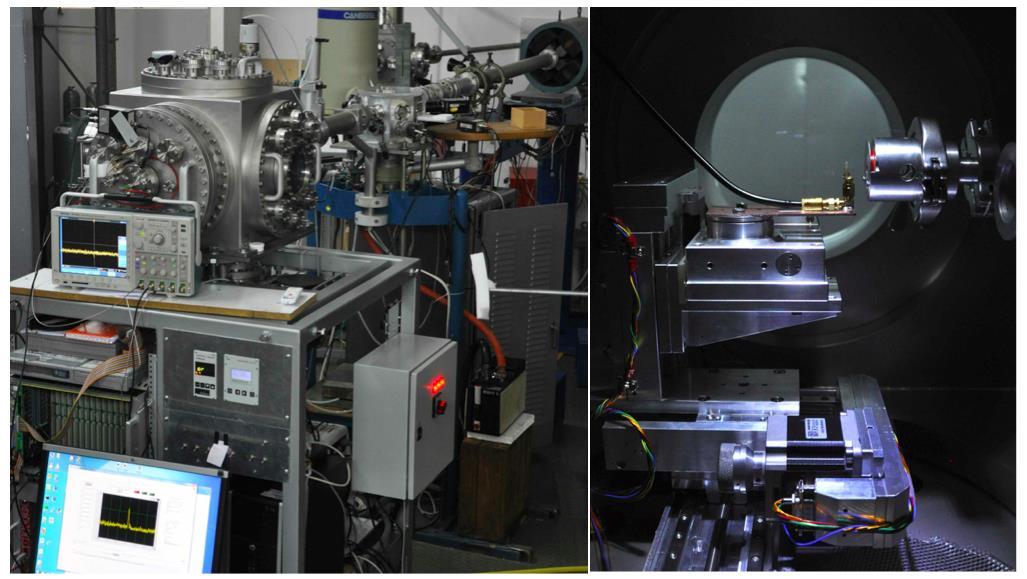Irradiation and Detector Testing
Through the recently completed EU FP7 project Particle detectors, a new detector testing station has been installed at the -15 degree beam line, just behind the IAEA scattering chamber used now only for the PIGE spectroscopy.
In order to enable testing of detectors having different construction geometries, working principles and aims, this scattering chamber is of rather large dimensions (40 cm cube). Experiment can be performed in a high vacuum environment, or in atmosphere in which case beam exit window is installed.
All ion beams that can be produced by any of the two RBI accelerators can be directed into the chamber. The beam is being collimated by adjustable slits that forms a rectangular beam shape in sizes between10 micrometers and 10 mm. Positioning is controlled by motorized xyz stage and optional two axes goniometer. All axes are computer controlled and objects being tested or irradiated could be scanned in front of the beam up to 10 x10 cm2 area.
In addition to detector testing, this chamber can be also used for irradiation and ion implantation. Areas being irradiated could be as small as 0.1 mm and as large as 10 cm. This means that sample sizes could be also of different dimensions. Homogeneity of irradiation is achieved by scanning, while beam current monitoring can be done by indirect techniques (e.g by RBS or PIXE detectors).


